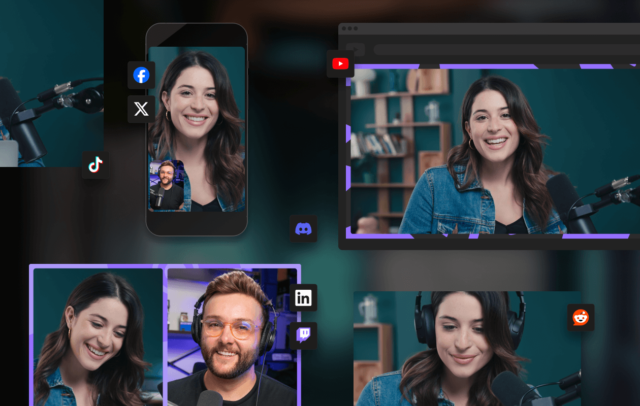Social media stories have become one of the most popular ways to engage with audiences in a fleeting yet impactful manner. With platforms like Instagram, Facebook, Snapchat, and LinkedIn offering story features, leveraging these ephemeral content formats can significantly enhance your event promotion strategy. Here’s how to effectively use social media stories to build excitement and drive attendance for your events.

Table of Contents
Toggle1. Understand Your Audience
Why It Matters: Tailoring your content to resonate with your audience is crucial for engagement.
Best Practices:
- Identify Your Target Audience: Understand the demographics, interests, and online behavior of your audience. Are they young professionals, families, or niche enthusiasts?
- Analyze Engagement Patterns: Use analytics tools to see when your audience is most active on social media. This will help you choose the best times to post your stories.
2. Create a Content Calendar
Why It Matters: A structured approach to content creation ensures consistency and timely promotion.
Best Practices:
- Outline Key Dates: Mark important dates related to your event, such as registration deadlines, speaker announcements, and the event date itself.
- Plan Diverse Content: Include a mix of behind-the-scenes looks, speaker highlights, countdowns, polls, and reminders in your content calendar. This keeps your audience engaged and informed.
3. Utilize Engaging Visuals
Why It Matters: Eye-catching visuals are essential for capturing attention in a crowded feed.
Best Practices:
- Use High-Quality Images and Videos: Invest in professional photography or graphic design to create visually appealing content. Consider using tools like Canva or Adobe Spark for easy design.
- Incorporate Branding Elements: Use consistent colors, fonts, and logos to ensure that your stories align with your overall branding strategy.
4. Leverage Interactive Features
Why It Matters: Interactive elements increase engagement and encourage participation from your audience.
Best Practices:
- Polls and Quizzes: Use polls to gather opinions on event topics or ask fun questions related to your event. This not only engages your audience but also provides valuable insights.
- Countdown Stickers: Create urgency by adding countdown stickers to your stories. This encourages viewers to mark their calendars and builds anticipation.
- Question Boxes: Allow your audience to ask questions about the event, which can help address concerns and generate excitement.
5. Share Behind-the-Scenes Content
Why It Matters: Behind-the-scenes content humanizes your brand and makes the event feel more relatable.
Best Practices:
- Show Preparation Efforts: Share clips of your team setting up the event, rehearsing, or discussing plans. This gives your audience a sense of involvement and excitement.
- Introduce Speakers and Performers: Create stories featuring interviews or short clips of speakers or performers discussing what attendees can expect from their sessions.
6. Highlight Key Speakers and Sessions
Why It Matters: Showcasing your event’s value proposition can entice more attendees.
Best Practices:
- Feature Speaker Profiles: Use stories to introduce your speakers, showcasing their expertise and what they will discuss at the event.
- Share Session Sneak Peeks: Provide brief previews of key sessions or workshops, emphasizing what attendees will learn and how it will benefit them.
7. Encourage User-Generated Content
Why It Matters: User-generated content builds community and enhances trust in your event.
Best Practices:
- Create a Unique Hashtag: Encourage attendees to share their own stories about your event using a specific hashtag. This makes it easy to find and share their content.
- Repost Attendee Stories: Share stories from attendees who tag you in their posts. This not only fosters engagement but also builds social proof.
8. Post Event Updates and Reminders
Why It Matters: Keeping your audience informed helps maintain excitement and encourages last-minute registrations.
Best Practices:
- Regular Reminders: Share countdowns and reminders as the event date approaches. Highlight any limited-time offers or discounts for last-minute registrations.
- Live Updates During the Event: Use stories to provide live updates, share highlights, and post attendee reactions. This keeps those who couldn’t attend engaged and may encourage them to join in the future.
9. Analyze Performance Metrics
Why It Matters: Tracking performance helps refine your strategy for future events.
Best Practices:
- Use Analytics Tools: Most social media platforms provide insights on story views, interactions, and engagement rates. Analyze these metrics to understand what content resonates most with your audience.
- Adjust Strategies Accordingly: Based on performance data, adjust your content strategy for future promotions to better meet the preferences of your audience.
Conclusion
Social media stories offer a dynamic way to promote your events, fostering engagement and excitement among your audience. By understanding your audience, creating compelling content, utilizing interactive features, and leveraging user-generated content, you can effectively enhance your event promotion strategy. Remember to analyze performance metrics to continuously refine your approach, ensuring that each event promotion is better than the last. Embrace the power of stories, and watch your event attendance soar!


No responses yet